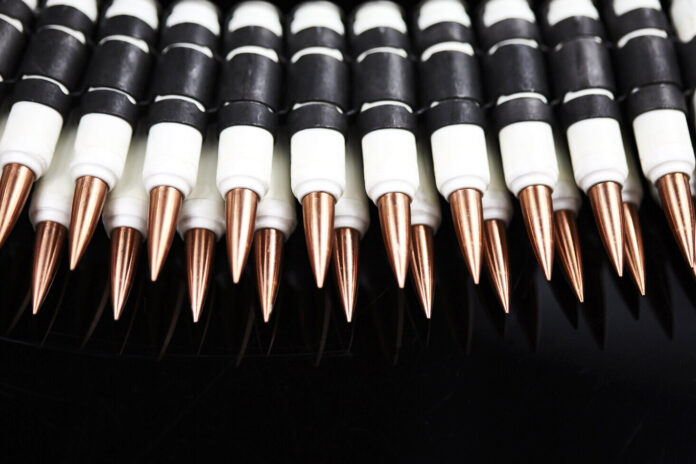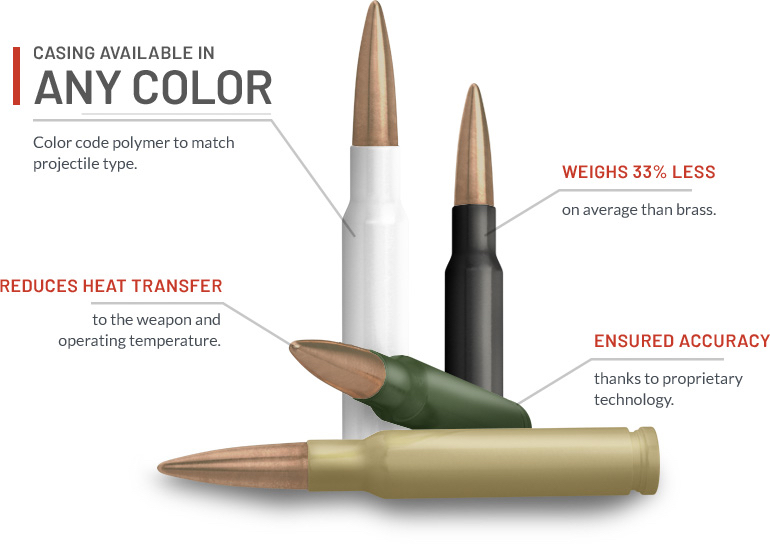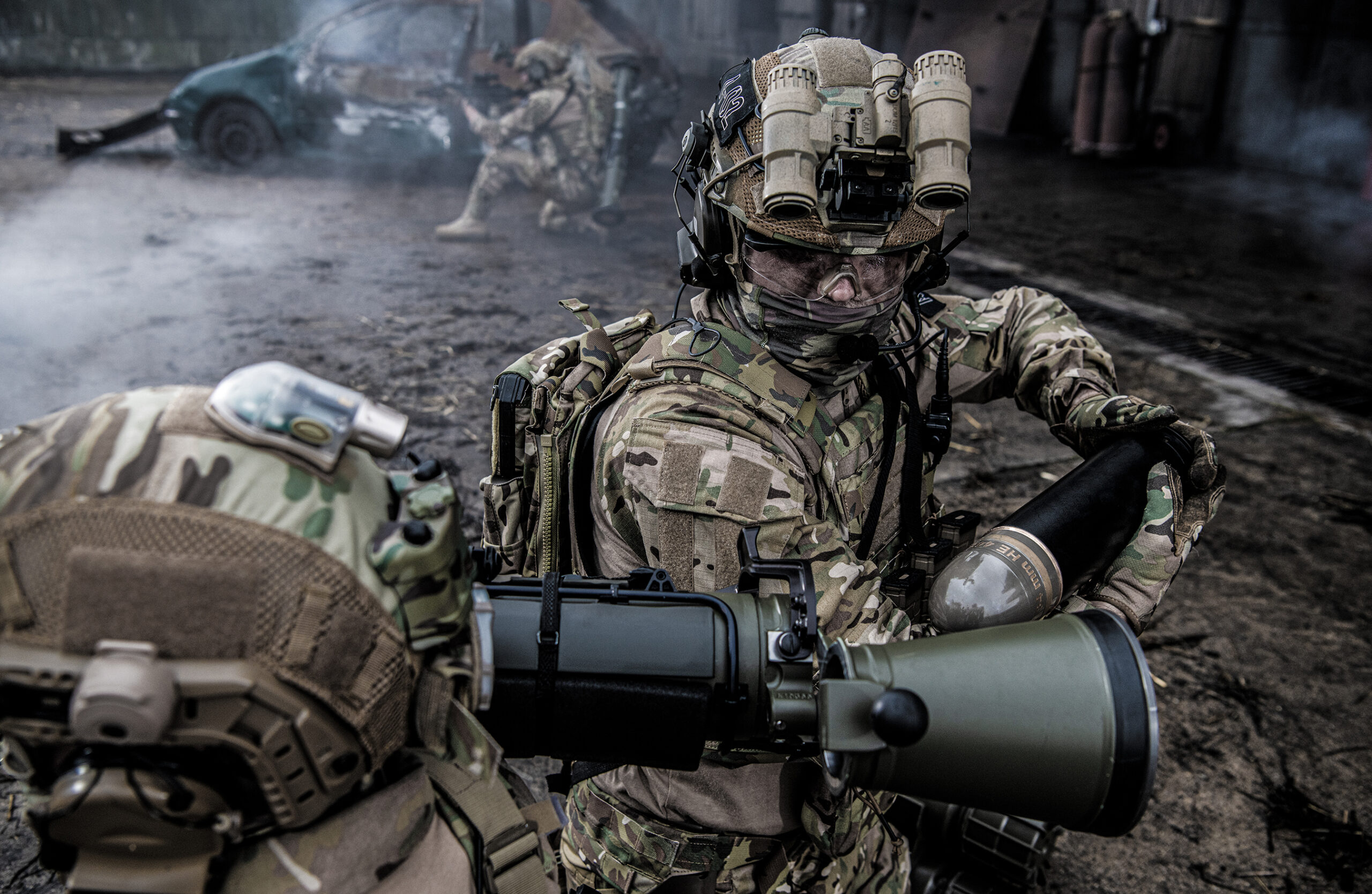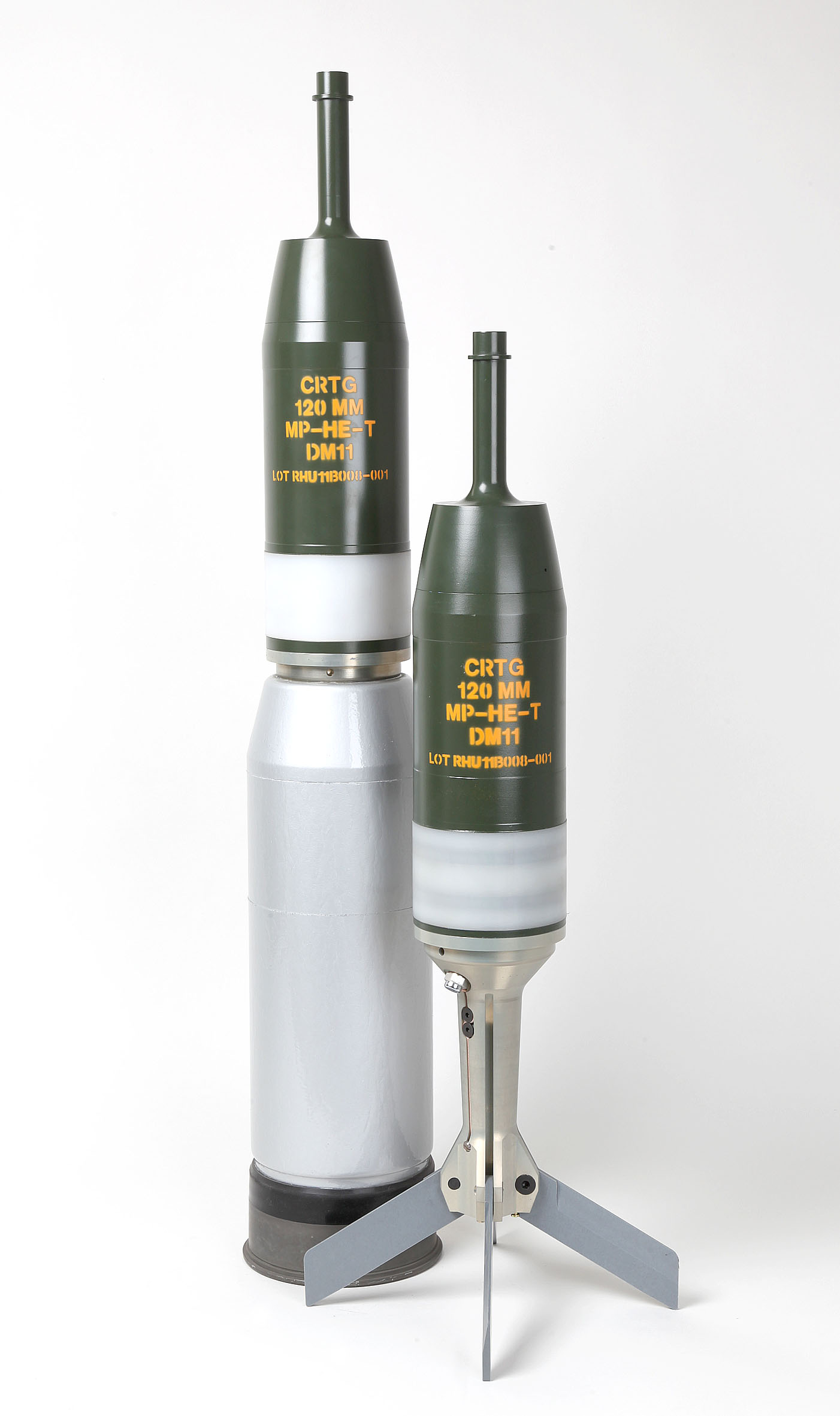
New developments in ammunition is giving weapons more flexibility to address an increasingly diverse range of threats on the battlefield.
Although military weapon systems typically get the most attention, they are actually just a means to deliver projectiles on target. Continuous advances in ammunition design significantly enhance the lethality of existing weapons in ways that changed tactics.
Developments in ammunition fusing, warheads, and even cartridges continue to make existing weapons not only more effective but also able to address new and evolving threats. The development of the Variable Timed (VT) fuze for artillery, for example, greatly increased the effectiveness of cannon against both aircraft and infantry, even those in open trenches.
Recently advances which are altering combat cover ammunition for small arms, medium calibre, auto-cannon, artillery and mortars, tanks, and shoulder-fired munitions. Each of these are offering significantly enhanced or even new capabilities to existing weapons.
Small Arms Ammunition
Most often advances in ammunition are reflected in its “effector,” the projectile and/or its components. Yet, in small arms ammunition the latest innovation has been in the cartridge. Brass has been the material of choice for gun cartridge cases since the 1870s. The US firm True Velocity, however, has developed a polymer composite-case that outperforms brass in significant ways. Being able to be consistently formed with higher precision the TVCM (True Velocity composite-case munition) allows higher and consistent velocities than brass (or steel) while offering a 30 percent lower ammunition weight. This drops the weight of a soldier’s load of 210 rounds from 5.56 pounds (2.5 kilograms) to 3.9 lbs (1.76kg) The polymer also does not hold heat like metal cases (a spent case can be held in the hand). This means that heat from firing is not transferred to the weapon chamber which can cause unintentional round ‘cook-off’. This is of particular concern with fast-firing weapons such as machine guns (MGs) and Gatling style guns such as Dillion Aero’s M134D, which fires 3000 rounds per minute (rpm). This lower chamber pressure and temperature also extends weapon life. TVCM firing shows little deviation in performance between shots assuring greater accuracy.
True Velocity has applied the TVCM to a range of ammunition sizes, initially focusing on those for rifles and MGs, although the technology and its benefits appears compatible be to larger calibres such as heavy MGs (.50 calibre) and auto-cannon ammunition. The adaptability of the TVCM to various weapons and ammunitions was illustrated in its offering in the US Army’s new 6.8mm calibre selected for its Next Generation Squad Weapons programme. True Velocity not only applied the effectiveness of its composite case in a proposed new service rifle and automatic weapon but, as Patrick Hogan, the company’s chief marketing officer explained, “demonstrated that the 6.8 TVCM could be used to adapt the current 7.62mm M240 Medium Machine Gun, M110 sniper rifle, and M134 minigun to the 6.8 by only changing the barrel.” This not only enhances the performance of these weapons but provides for a common ammunition to be used across the most widely fielded tactical weapons.

Infantry Weapons
Enhancements to ammunition advances are key to weapons already fielded and that are familiar to the soldiers. An example of this is the Nammo M72 Light Anti-Armour Weapon (LAAW). Designed in the 1960s as a single-use anti-armour munition that was compact and at 5.5lb (2.5kg) could be carried and fired by the individual soldier, it has under-gone a number of improvements and variants while maintaining its functional form. Enhancements include versions capable of firing from enclosures, an enhanced 450mm penetration model, and the ASM RC anti-structure version. The latter features a ‘dual-mode’ (short or long delay) fuze that is programmed by the firer using a thumb switch. These updated M72s expand tactical solutions available to the soldier on an as needed basis.
A classic case where ammunition developments have extended not only the fielding of a weapon but have given it a renewed relevance is the Carl Gustav 84mm Recoilless Rifle from Saab Bofors Dynamics. Introduced in 1948 as a small unit anti-armour weapon, the development of a range additional ammunition types including anti-personnel, anti-structure/bunker-buster, multi-purpose, confined space and support rounds like smoke and illumination significantly increased its tactical contribution. Mats Fagerberg, head of marketing for Saab’s Ground Combat unit explained: “it became uniquely a ‘jack-of-all-trades” infantry weapon’. Typically, employed with a two-soldier team, the Carl Gustav can take-on a variety of targets and tactical situations.
The Saab single-use AT-4 uniquely offers some of the capabilities of the Carl Gustav rounds but in a package that can be issued to individual soldiers as a disposable munition. The AT-4 family includes HEAT (anti-armour), CS (confined space) rounds, extended range and a high explosive round that allows the gunner to select impact or air-burst detonation.
The Carl Gustav is fielded by over 40 militaries worldwide. The US Army and Marines adopted it for wide service as the MAAWS (Multi-role Anti-armour Anti-personnel Weapon System). This M3E1 (the US designation) or M4 (Saab’s version) has improvements including being lighter 15lb (6.6kg)weight, shorter at 950mm (37 inches), an electronic round counter, ergonomic adjustments, and a Fore Grip Controller for the Fire Control Unit. Fitted with the FCS13-RE1X reflex site with disturbed reticule it provides precise ballistic solutions, programming for future ammunition and moving target ballistic solutions. COL Rhett D. Thompson, director, Soldier Requirements Division at the US Army Manoeuvre Center of Excellence shared: “Survey of MAAWS’ performance shows greater than 90 percent user satisfaction…. amongst the highest of any individual or crew served weapon in our portfolio.”

An innovation that has been recently presented is a laser-guided munition developed for the Carl Gustav in a collaboration with Raytheon Technologies. Flying at near-supersonic speeds, it has a warhead capable of penetrating fortifications, concrete structures, bunkers, and lightly armoured vehicles. “It’s laser-guidance allows reliable precise engagement of moving and static targets to 2500m”, explained Sam Deneke vice president Raytheon Land Warfare Systems. In field live firings the Guided Multi-purpose Munition (GMM) demonstrated seven hits in seven firings. GMM further extends both the distance and precision with which the small unit Carl Gustav crew can engage targets further expanding its capability to influence the battlefield.
Programmable Ammunition – Auto Cannon
Automatic cannon used on fighting and reconnaissance vehicles and anti-aircraft guns, though often having dual feeds each with a different round type, have enhanced their lethality though programmable fusing. Several firms have applied the technology to 30mm through 50mm medium calibre rounds. Northrop-Grumman’s Rylan Harris, director of Advanced Ammunition, explained that “the programmable fuse allows a gunner to select point, delayed or air-burst detonation by the same projectile. This offers the option to engage targets in the most effective manner. In addition, the introduction of airburst expands the array of battlefield threats that can be effectively addressed, including unmanned aerial vehicles (UAVs) and targets in defilade.”
Northrop-Grumman’s programmable fuze design can be applied to a range of medium calibre auto-cannon. The fuze has three operational modes which allow a gunner to select the mode that will best defeat a specific target. This function has been currently applied to its 30mmx173mm (MK310 PABM) used on the Stryker with deliveries beginning in 2022. “The technology can however, be applied to other calibre sizes with feasibility up to 50mm assured,” stated Harris. “ It provides not only an order of magnitude increase in projectile lethality but also allows effective engagement of threats that was impractical with prior ammunition. Northrop-Grumman has demonstrated this enhanced effectiveness and lethality in live-fire events against representative naval attack craft, UAVs, and light tactical vehicles.

Rheinmetall has also capitalised on programmable fuze to multiply gun lethality against aerial targets. Its AHEAD 35mm computes the velocity of each round fired calculating and transmitting the optimum moment to eject each rounds152 tungsten sub-projectiles to intercept and destroy even a small or fast-moving target. Each of these programmable projectiles can deliver the desired effect with fewer shots, thereby conserving ammunition.
Multi-purpose/Programmable – Tank Ammunition
Enhancing the ‘effect on a target’ has been pursued by increasing accuracy, increasinbg fire rate, or using projectiles optimised for various targets. The drawback of the latter two is the impact on the limited amounts of ammunition readily available with the weapon. Both individual soldiers and combat vehicles or aircraft can only carry a set number of rounds. The more shots needed to achieve the necessary result, the fewer targets can be addressed. Making each projectile fired more efficient offers major advantages which has led to the introduction of ‘programmable ammunition’. This takes advantage of advances in electronics miniaturisation and hardening, as well as better computing, to provide a single projectile with the capability to function with different modes and to address multiple target types.
A combat vehicle’s ability to quickly engage a threat can determine not just its success but its very survival, so it moves ready to fire immediately on command should contact occur. Referred to as ‘battlesight’, a key consideration is what round type should be pre-loaded especially if it is unclear what threat may be encountered? This has been particularly a concern for the Main Battle Tank (MBT) where replacing the round in the gun chamber is impractical. The development of multi-purpose programmable projectiles not only addresses this but also allows for optimising the effect on the targets being addressed. The US Army Picatinny Arsenal’s developed M1147 AMP for the 120mm tank cannon replaces four previous rounds. It’s fuze can be set while in the chamber prior to firing, so that it can achieve the best result against whatever target is presented. Against anti-tank teams or dismounted, entrenched or hidden troops it can be set to airburst out to 2000m. In urban areas the projectile can be set to breach concrete walls. Currently manufactured by Northrop-Grumman, AMP is also effective against armoured vehicles.
Maintaining the lethality of tank cannon against evolving threats is a serious concern. Rheinmetall’s DM11 multi-purpose 120mm round has been in service since 2010 and is programmable before firing for point, delay, or air-burst detonation. The delay function breaches walls or fortifications while airburst provides a significantly more effective counter against antitank teams. For heavier armour, Rheinmetall has developed the L55A1 120mm cannon (to substitute for the L44). It is associated with the improved armour defeating ammunition DM73 APFSDS which offers an eight percent performance increase over current DM53/DM63 rounds. The company’s next step is an entirely new APFSDS, the KE2020Neo, which is expected to be available by 2026 showing a 20 percent increase over current rounds.

Indirect Fire
Precision Guided Munitions (PGM) for artillery and mortars have received wide attention. Projectiles like the M982 Excalibur (co-developed by BAE Bofors and Raytheon), M1156 Precision Guidance Kit, and Bofors/Nexter Bonus fired from current 155mm howitzers allow four-meter CEP target accuracy even at maximum range. Yet, less know are enhancements made in a wide range of artillery and mortar projectiles that have made them significantly more lethal. The Rheinmetall 120mm IHE produces greater shrapnel effect and with the proper fuse penetrates concrete. Saab’s THOR 120mm mortar projectile doubles the target area effect while its 4,250-steel ball fragment pattern increases lethality.

Nammo has applied its technology to the 40mm grenade launcher, particularly the longer range 40mmx53 automatic launchers. In addition to the high explosive, high explosive dual purpose (HEDP), they offer one with airburst. The HEDP-AB provides fragmentation, penetration, blast and incendiary effect in a single type of round. This simplifies both the gun crew task and logistics of resupply.

The Future
Effects in modern combat are improved by how quickly recent technologies and systems are introduced onto battlefields. UAVs have rapidly been fielded and have taken on a predominant role. This sudden rise can find militaries unprepared with countermeasures. Dedicated system solutions are costly, take time to develop and produce and are initially limited in number. However, enhancing already fielded systems through the introduction of new ammunition capabilities offers a significantly faster response. This proved true during World War II where the introduction of the VT proximity fuze for naval 5-inch guns provided decisive four-fold improvement in their ability to destroy attacking aircraft. Similarly, applying technology to ammunition readdresses some long-time limitations in existing weapons. The air-burst capability for direct-fire guns now permits engaging troops in defile or in open trenches. It also offers increased ability to suppress or neutralise anti-tank missile or enemy gun crews at long ranges. Focusing on ammunition improvements can provide results that change the battlefields.
by Stephen W. Miller












